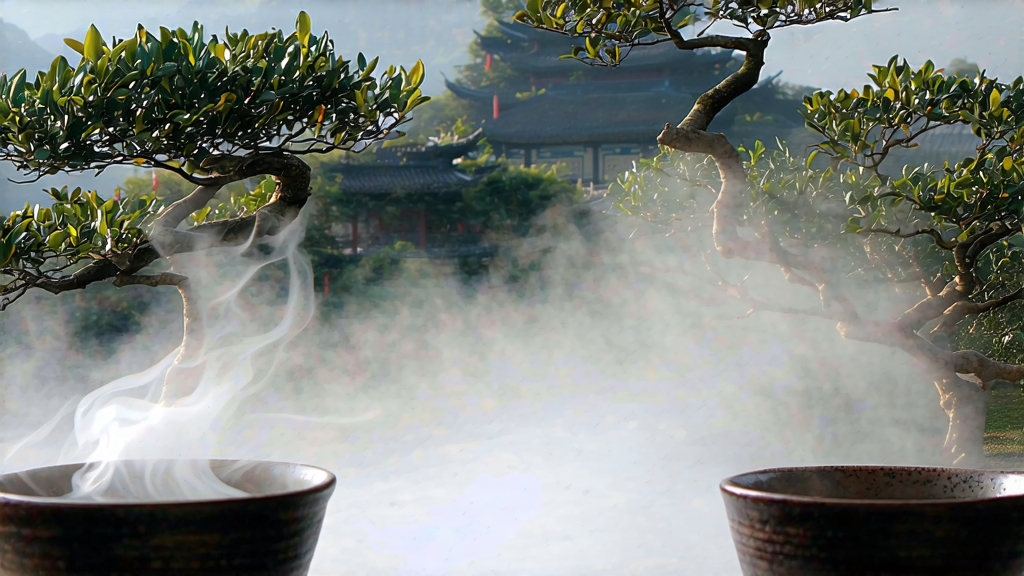
Hidden in the northeastern corner of Guangdong Province, the Phoenix Mountains rise like a green spine above the Han River. For more than nine centuries the cool cloud-veiled slopes have sheltered a tea that connoisseurs call “drinkable perfume”: Phoenix Dancong, the only oolong in China deliberately crafted to mimic the scent of fresh flowers and ripe fruit. Unlike blended aromatics, every fragrance note in Dancong is coaxed solely from the leaf itself, making each cup a natural symphony that changes with altitude, age of the tree, and the season of harvest.
Historical roots
Local chronicles credit the Song Dynasty imperial family, fleeing south before Jurchen cavalry, with recognizing the tea’s potential in 1110 CE. Court refugees settled among the She ethnic minority, grafted garden varieties onto wild mountain trees, and submitted the resulting brew as “tribute tea.” By the late Ming the mountain monks had perfected the practice of cloning individual trees whose leaf naturally evoked specific aromas—orchid, almond, ginger flower, honey, even ripe mango—giving birth to the term dancong, literally “single bush.” Because every aromatic profile was traceable to one mother tree, farmers treated each as a micro-variety, preserving genetic diversity long before modern horticulture championed the concept.
Micro-terroir and garden taxonomy
The Phoenix range is a granite massif sliced by deep ravines that channel humid maritime air inland. Day-night temperature swings of 15 °C slow leaf growth, condensing sugars and volatile aromatics. Altitude bands are named in local dialect: below 400 m “li pian,” 400-600 m “zhong shan,” 600-800 m “gao shan,” and above 800 m “yun wu” where clouds kiss the canopy eight months a year. Within these bands 80-plus aromatic profiles have been catalogued, but only ten are commercially promoted today. “Mi Lan Xiang” (honey-orchid), “Huang Zhi Xiang” (orange blossom), and “Zhi Lan Xiang” (orchid) dominate export menus, yet serious collectors hunt rarities such as “You Hua Xiang” (cinnamon) or “Ginger Flower,” each limited to a handful of centenarian trees.
From leaf to aroma: the craft cycle
- Plucking: only the middle three leaves plus a bud are taken when the morning dew just lifts, usually between 9 a.m. and noon to balance moisture and sugar.
- Solar withering: trays of leaves are set on bamboo racks outside the mountain huts for 20-30 minutes, softening cell walls and initiating enzymatic oxidation.
- Indoor withering & shaking: the leaf is gently tossed in round bamboo sieves every hour through the afternoon and night, bruising edge cells so oxygen can react with catechins. Masters listen for a faint rustle—halfway between silk and paper—to judge when to stop.
- Green killing: a 260 °C wok arrests oxidation at roughly 30 %, preserving a green core while the rim turns reddish-brown.
- Rolling & strip-twisting: the warm leaf is wrapped in cotton cloth and rhythmically kneaded, forming the signature long, dark, semi-twisted strip.
- Two-stage roasting: first over a lychee-charcoal basket at 80 °C for two hours, then rested ten days to let residual heat redistribute moisture, followed by a lower 60 °C bake for up to 20 hours. Charcoal species matters; lychee wood burns evenly and imparts a subtle fruit sweetness that marries with the honey note.
- Aging: unlike green tea, Dancong improves for three years if stored in unglazed clay jars; the roasted character mellows and the floral top note gains depth.
Chaozhou gongfu brewing: precision in miniature
The birthplace of gongfu cha, Chaozhou city, lies two hours downstream from the Phoenix peaks, so locals treat Dancong as hometown pride. The ritual uses a 100 ml white porcelain gaiwan, three small aroma cups, and a clay “ship” to catch spills. The goal is to extract aromatics first, sweetness second, and structure last.
- Ratio: 6 g leaf to 100 ml water (roughly one heaping tablespoon).
- Water: spring or filtered, 95-98 °C; below 95 °C the honey note stays